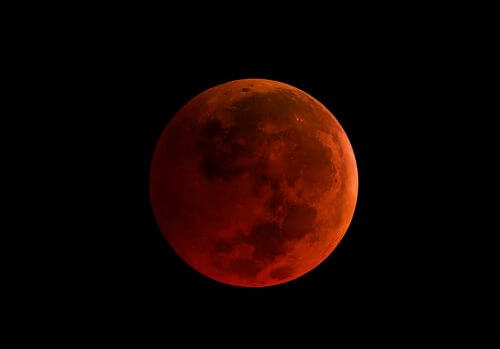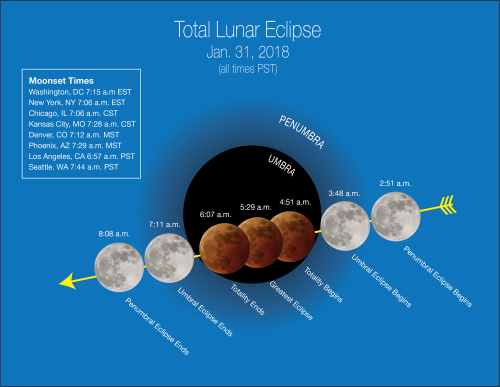Today, a rare astronomical coincidence that last happened in 1866 will occur: a total lunar eclipse, which will give the moon a reddish color, will occur at the same time as a "super moon" phenomenon, in which the moon is at the closest point to the earth in its orbit and appears slightly larger. These two phenomena are timed with the second full moon for the month of January, a phenomenon known as a "blue moon".

By Elizabeth Zobritsky, Goddard Space Flight Center, NASA. Translation from English: Elisef Kosman
Note: In Israel it will be possible to observe a partial lunar eclipse, during its sunrise in the evening. You can expect Live on the NASA website (starting at 12:30 Israel time), which will record the complete eclipse from the western United States.
The lunar eclipse that will occur today, January 31, 2018, will provide a team of scientists with a unique opportunity to study the Moon using the astronomical equivalent of a thermal camera to sense heat.
Three lunar events will combine in an unusual overlap that has been nicknamed "Super Blue Blood Moon" (Super Blue Blood Moon). Today will be the second appearance of a full moon in the month of January, which will turn it intothe blue moon The first of the year 2018 [the name has nothing to do with the color of the moon]. The moon will also be considered "super moon” – a phenomenon that occurs when the Moon appears slightly larger and brighter, when it is close to Phrygia, the closest point to the Earth in its elliptical orbit.
In addition, will occur lunar eclipse full which will temporarily give it a reddish color, a phenomenon known as "blood moon". The phenomenon occurs when the Earth hides the sunlight from the Moon, and only red light rays manage to penetrate the Earth's atmosphere and arrive in front of the Moon.
For researchers, the eclipse provides an opportunity to see what happens when the surface of the moon cools rapidly. This information helps them understand some of the characteristics of the regolith - the mixture of soil and loose rocks on the surface - and how it changes over time.
"During a lunar eclipse, the temperature change is so dramatic that the surface of the moon goes from being inside an oven to a freezer in just a few hours," said Noah Petro, associate scientist of the Lunar Reconnaissance Orbiter research mission. : LRO), from NASA's Goddard Space Center in Greenbelt, Maryland.
Normally, the transitions into and out of darkness, and the accompanying temperature changes, are spread over the length of a lunar day, which lasts 29 and a half Earth days. A lunar eclipse kicks these changes into high gear.

From the Haleakala Observatory on the island of Maui in Hawai'i, the team will conduct their research using invisible wavelengths where heat can be remotely sensed. They've done this kind of research several times before, focusing on specific areas on the moon to see how they retain heat during the eclipse.
"The whole character of the moon changes when we observe it with a thermal camera during the eclipse," said Paul Hein of the Laboratory for Atmospheric and Space Physics at the University of Colorado Boulder. "In the dark, you can't see many familiar craters and other features, and the areas around some of the craters, which are usually unremarkable, start to 'carry', because the stones there are still hot."
The speed at which the surface will lose heat depends on the size of the rocks and the characteristics of the material on the surface of the ground, including its composition, and how porous and soft it is.
Lunar researchers already know a lot about temperature changes between day and night and between seasons, from the information collected by the LRO probe's Diviner instrument, an infrared radiometer that has been mapping the surface temperature since 2009. These long-term changes reveal information about larger parameters and the properties The general of the first centimeters of the regular layer. The short-term changes due to the eclipse will provide information about the thin material in the uppermost layer of the regolith.
By comparing these two types of observations, the team will be able to look at changes in specific areas - for example, the "moon twists" (lunar swirls) at the Rainier site a dimple or crater created by an asteroid impact and the loose debris around it.
This kind of information is useful for practical purposes such as searching for suitable landing sites for a future lunar mission. It also helps researchers understand the evolution of the moon's surface.
"These studies will help us tell the story of how large and small craters change the surface of the moon over geological time periods," said Petro.

One response
Oof, I missed it